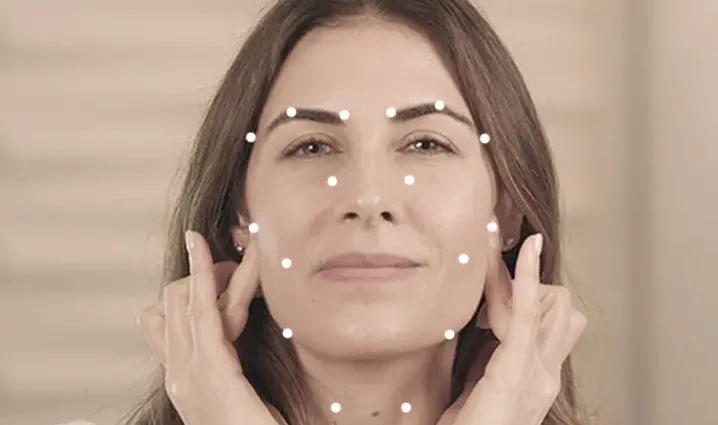Many facial massage techniques affect the muscles and, as a result, the quality of skin nutrition. However, cosmetologists agree that no massage will give a lasting effect if a person has a broken posture. When the «skeleton» of the body — its bone structure — is somehow damaged, cosmetic procedures will only give a temporary effect. How to form a posture that will allow the face to retain the radiance of youth?
The more flexible and free our posture is, the more young, strong and confident we look — this is a fact. Which particular points of the spine should be paid attention to in order to improve the condition of the face: tissue turgor and skin quality?
seventh cervical vertebra
It is located at the base of the neck and in many looks like a fairly noticeable tubercle. This is really the largest of all cervical vertebrae, but normally, with good posture, it should not protrude much.
How is this area of the body related to youth and beauty of the face? The seventh cervical vertebra is the epicenter of emotional stress. For example, when we are worried, we can pull our heads into our shoulders. This movement is controlled by the structures around him: they tense up, and through them we “realize” our anxiety. If anxiety has become habitual, the region of this vertebra ceases to return to a normal relaxed state.
It is important that the massage is painless. The more pleasant it is, the more useful it is.
Tension in the neck leads to a deterioration in the outflow of blood and lymph, facial tissues receive less nutrition and are less cleaned. The result: a decrease in turgor, dry skin, wrinkles — does not take long.
What to do? It is physically impossible to monitor the relaxation of the base of the neck, shoulder girdle and adjacent back muscles every minute, so it is important to maintain the correct position of the neck and relaxation of the region of the seventh cervical vertebra. This will help gymnastics, which works out the entire spine, for example, qigong for the spine Sing Shen Juang. Daily exercises (it will take 15 minutes) can be supplemented with occasional relaxing massages. It is important that it is painless. The more pleasant it is, the more useful it is.
fourth thoracic vertebra
This vertebra is located approximately between the shoulder blades. To understand exactly where, throw your hand behind your head and press on the point that your fingers reach. This will be the fourth chest.
Why is he important? This is the point at which all the “stress vectors” of the body converge. In particular, if there are tensions in the shoulders and chest, most likely they are associated with the quarter chest.
It is useful to periodically visit an osteopath: he will relieve the tension accumulated in the body
When the chest is tense, this, firstly, affects the condition of the neck, and secondly, it restricts breathing. We do not notice that we are breathing somehow wrong, not with a full chest, but our body reacts sharply to this: the lack of oxygen affects the condition of the skin of the face. So do not blame the environment for everything — it’s in ourselves too.
What to do? Breathing deeply will help gymnastics, working out the spine as a whole. It is also useful to periodically visit an osteopath: he will relieve the tension accumulated in the body and help “free” the chest.
Temporomandibular joint
This joint, oddly enough, is also part of the posture, the frame of our body. Being in tension, it changes the position of the neck and shoulders and “pulls” the tissues of the face — it creates tension that interferes with the outflow of lymph and blood. Where facial muscles are overstressed, wrinkles and swelling form over time.
What to do? How to relax the temporomandibular joint, which tenses up not only in the process of chewing and talking, but also from every negative emotion? The first step is to work with the spine: relaxing gymnastics, which restores the flexibility and health of the neck, indirectly affects this joint.
Work on this point several times a day, noting how the state of the temporomandibular joint changes.
In addition, there is a “magic” point on the face that initiates relaxation of the temporomandibular joint. It is involved in any facial massage, and even with an isolated effect, it can correct its entire structure.
This point is the angle of the cheekbone. To find it, place your index and middle fingers near the inner corner of the eye and move from the nose to the ears along the cheekbone. Under the outer corners of the eyes, you will find the most prominent point of the cheekbone. Stop on it: pressing should be palpable, but not painful. Notice how the temporomandibular joint reacts to this impact, how much more relaxed it becomes.
Work on this point several times a day, noting how the condition of the joint changes. In combination with regular work on posture, this micro-massage will help make the skin more elastic, healthy and radiant.










